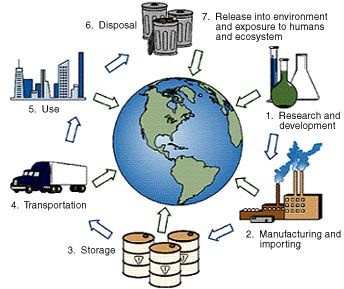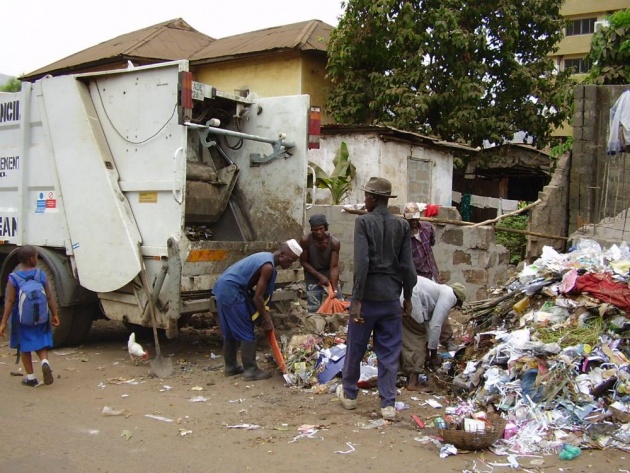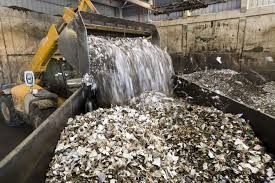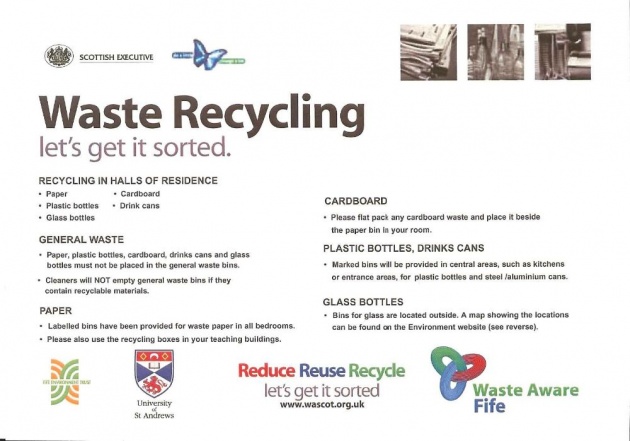POLLUTION
(Part 5)
In previous lectures we have briefly discuss and study about the pollution, air pollution, water pollution, Noise Pollution and Soil Pollution. Today we will discuss further type of pollution's which are Hazardous Waste and Solid waste. we can see the diagram as below;

above diagram shows the chemical complete cycle. now we will study briefly about the Hazardous Waste and Solid Waste.
Hazardous Waste
Hazardous wastes are solid, liquid, or gas wastes that may be deadly or harmful to people or the environment and tend to be persistent or non-degradable in nature. Hazardous waste are the raw material in the form of toxic chemicals and flammable or radioactive substances, including industrial wastes from chemical plants or nuclear reactors, agricultural wastes such as pesticides and fertilizers, medical wastes, and households hazardous wastes such as toxic paints and solvents. these are handle with very careful method.

About 400 million metric tons of hazardous wastes are generated each year, the use, storage, transportation and disposal of these substances pose serious environmental and health risks. These cause different type of dangerous diseases for example some of these materials can cause cancer, birth defects, nervous system disorders and death. Large-scale releases of hazardous materials may cause thousands of deaths and contaminate air, water and soil for many years. hazardous must be labeled like;

Basically, by studying it is observed that the Hazardous wastes are due to radioactive wastes from the nuclear power and weapons industries. There is still no safe method for permanent disposal of old fuel elements from nuclear reactors. Most are kept in storage facilities at the original reactor sites where they were generated.
Solid Waste
Solid waste is unwanted solid materials such as, paper, garbage, plastics and other synthetic materials, metals and wood. When we study, we will observe that billions of tons of solid waste are thrown out annually. When we observe cities in economically developed countries cities are produce far more solid waste per capita than those in developing countries. Moreover, waste from developed countries typically contains a high percentage of synthetic materials that take longer to decompose than the primarily environmental waste materials of developing countries.

Landfills the areas where wastes are buried. This is the cheapest and most common disposal method for solid wastes in the worldwide. But landfills quickly become overfilled and may contaminate air, soil and water. By using the burning process reduces the volume of solid waste but produces dense ashen wastes that often contain dangerous concentrations of hazardous materials such as heavy metals and toxic compounds. When we use natural biological process for decomposition of organic wastes, it is helpful to speeds up the decomposition process; it is also effective strategy for dealing with organic garbage and produces a material that can be used as a natural fertilizer.

Recycling programs are used to reduce solid waste pollution. Recycling, extraction and reusing certain waste materials, has become an important part of municipal solid waste strategies in developed countries. Expanding recycling programs worldwide can help reduce solid waste pollution, but the key to solving server solid waste problems lies in reducing the amount of waste generated. Waste prevention or source reduction, such as altering the way products are designed or manufactured to make them easier to reuse, reduces the high costs associated with environmental pollution.

That was about the solid waste and Hazardous Waste. Up to that extent we have thoroughly discuss the pollution and in the next coming article we will discuss about the other terms related to the pollution.



